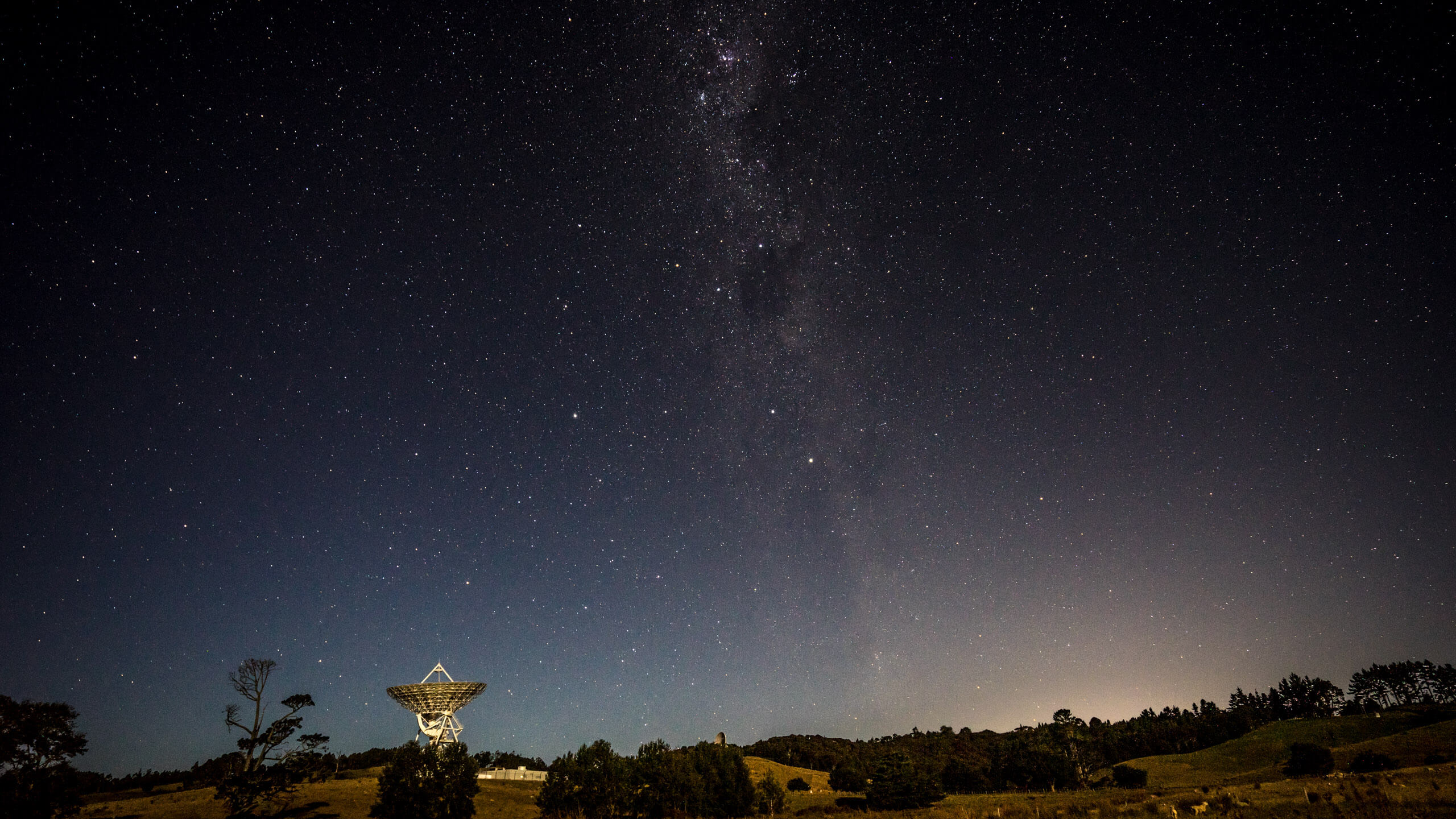When it comes to night sky photography, I am purely an amateur, a hobbyist. I don’t actually do it all that often either. But when an opportunity presents itself, one surely must make the effort. Going ill-prepared is almost as bad as going ill-equipped.
Warkworth Astronomical Radio Observatory
Quite literally in the middle of nowhere in New Zealand is Warkworth Astronomical Radio Observatory. A 30m dish (constructed in 2008) under clear skies with almost no light pollution.
Scout the area
I honestly do recommend scouting the area, and finding where it is safe to set up and move around. Roads in and out are handy too. Do you need permission? What is the weather forecast, clouds, clear skies? This area is mostly private property so we could not go in or go far, but we found the perfect vantage point from a public road.
Photographing night skies
Once it got dark we went and used the clear skies to our advantage and shot some Astro (Night sky photos) with the huge Radio/Satellite Dish in the foreground. While pretty happy with some of the images, I was struggling with my Sony A7II in the dark and finding my focus, I think they are in 100% focus until I get them on the big screen — arrgh! I wish I knew more about my camera, settings and night photography on that trip. I really needed our night sky expert Ken Lee with me!
Final thoughts
I used my Sony A7II camera and my Sony 16-35mm lens. I didn’t know until later, my camera actually had a fatal flaw, several in fact. Which made focusing difficult, stopping the viewscreen from operating and a few other problems. However, I could be partly to blame for my shots as well.
Camera settings — ISO1600, f/4.0, 31mm and 20 seconds. I was on a tripod with a remote shutter release but my shots were still a touch blurry. Such a shame. My husband using pretty much the same settings got fabulous photos. But then, this is more his passion than mine. I prefer portraits and still life.
Some helpful hints
I think we both could have brushed up on some reading while we were waiting for it to get dark; shame I hadn’t read Ken’s stuff back then. Here are a few of Ken’s articles you might find useful.
Why knowing camera settings is helpful
Understanding camera settings is important for improving your photography skills, as it enables you to have greater control over the outcome of your images. Knowing the right settings for different shooting scenarios can help you achieve the desired effect in your photos, such as controlling exposure and depth of field. Familiarizing yourself with camera settings can also save time and frustration when shooting.
The best Milky Way photography gear guide
This is a comprehensive guide to the equipment needed for capturing Milky Way photography. Key equipment includes a sturdy tripod, a camera with good low-light performance, a wide-angle lens and a remote shutter release. Other accessories, such as a headlamp and extra batteries, are also recommended for successful Milky Way photography.
How to find the Milky Way
This article explains how to find and photograph the Milky Way. It advises selecting a location with low light pollution, planning your shoot during a new moon, and using an app to track the position of the Milky Way. The article also recommends adjusting camera settings to capture the Milky Way’s beauty and offers tips for editing Milky Way photos in post-processing.
Don’t forget to check out some of Ken Lee’s other night sky articles, to improve your nighttime photography. I’m sure a little light reading could have improved my success rate as well. Still, practice makes perfect and it was a lovely evening spent with the cows, sheep and a few possums.
Source link










Leave a Reply